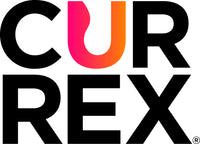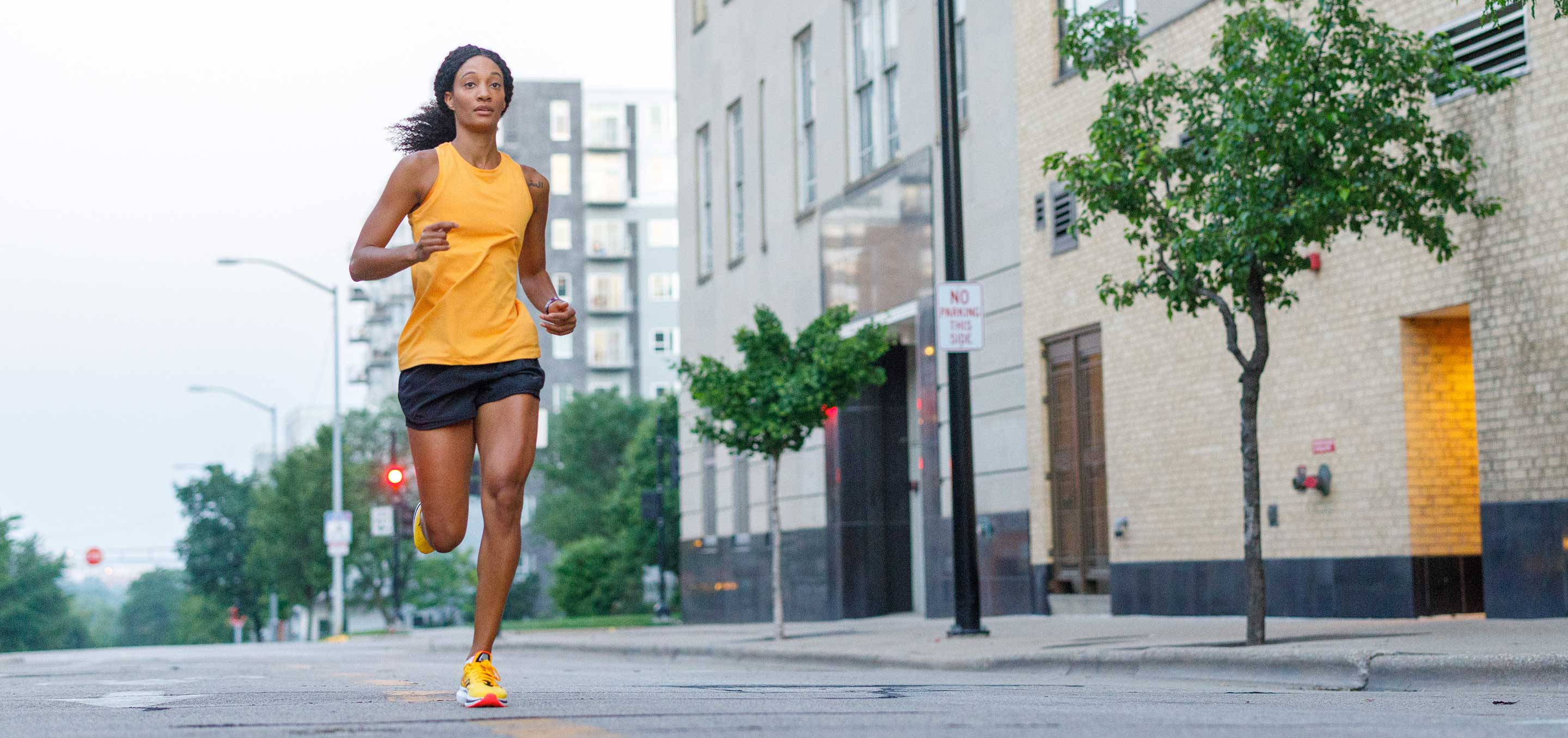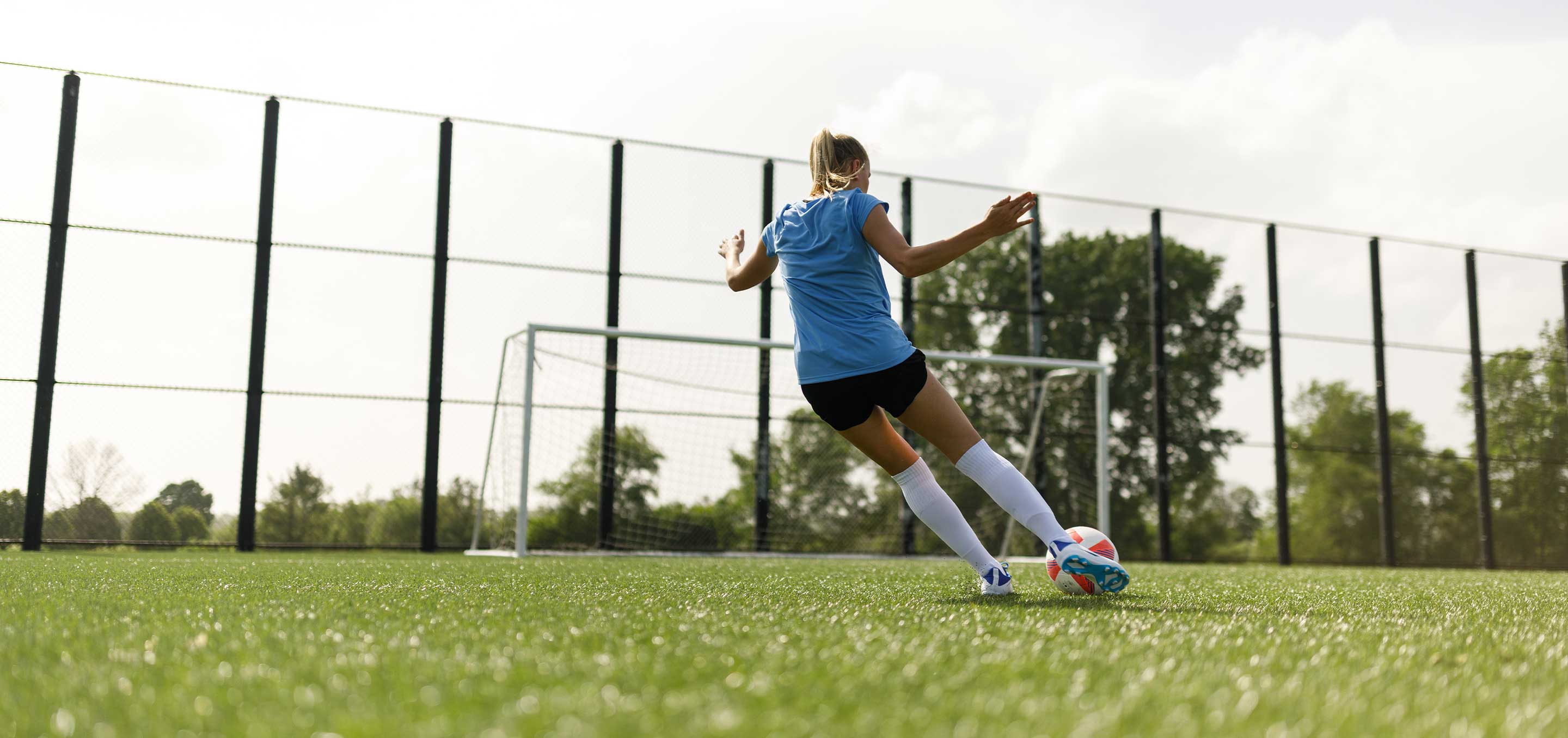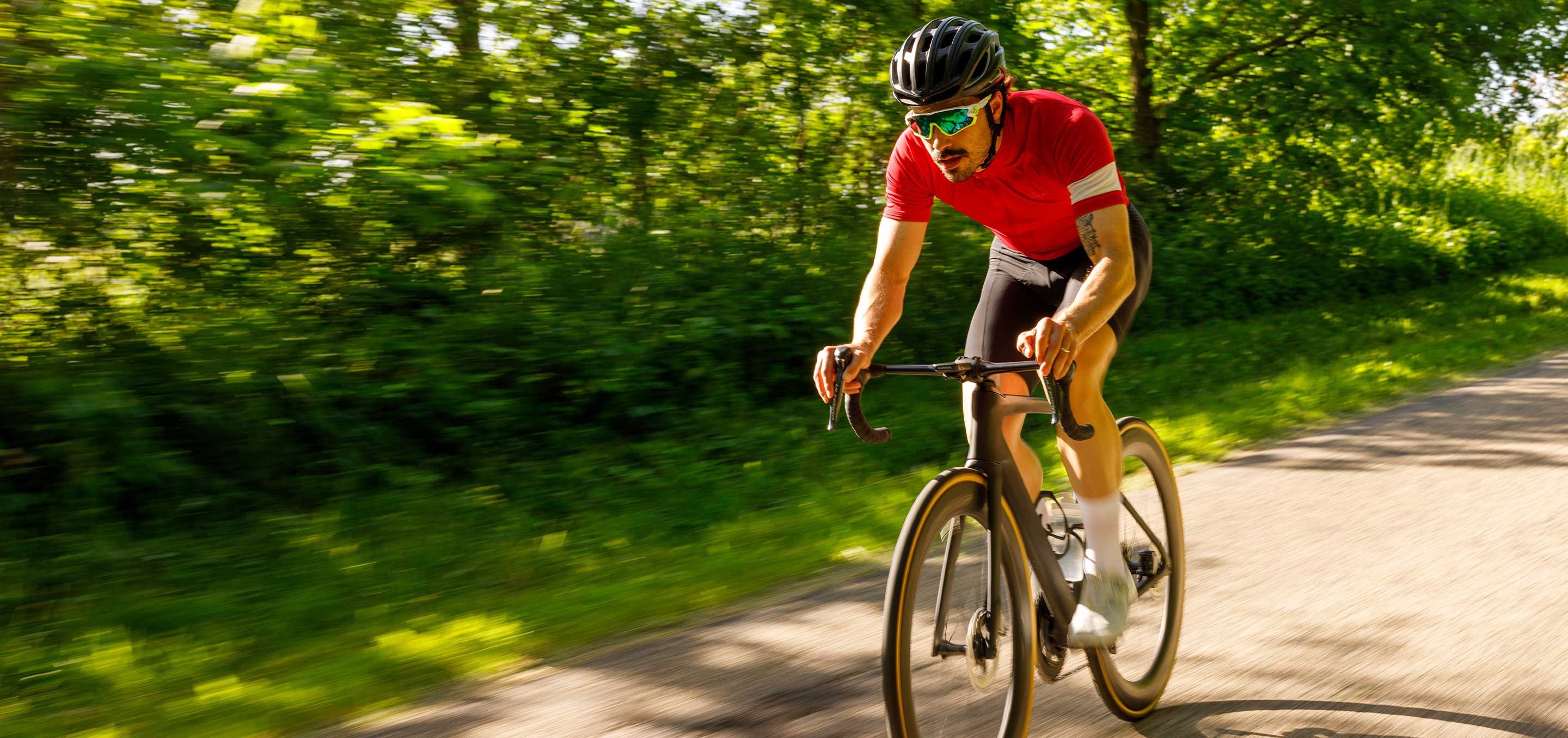What is the Difference Between Soccer and Football Cleats?
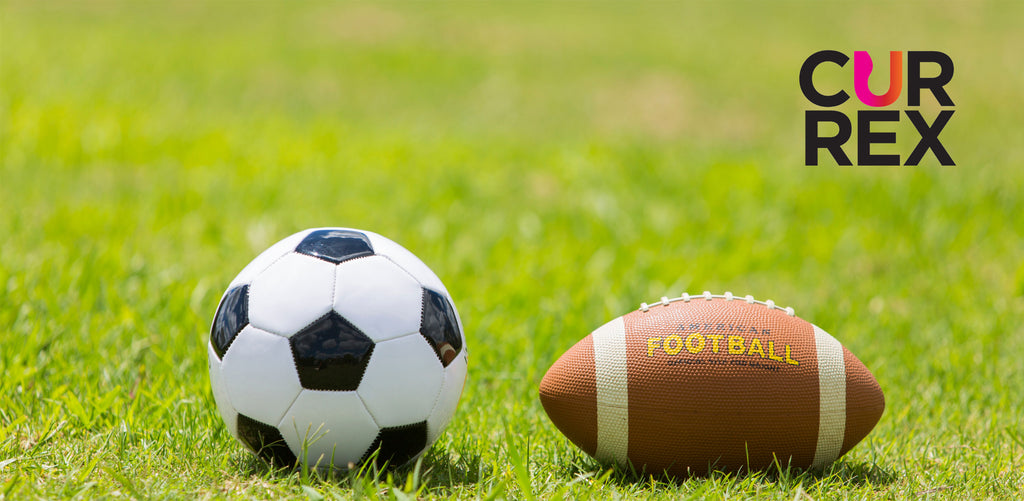
Soccer Cleats vs Football Cleats
From the football stadium to the soccer pitch, field sports require players to wear specialized footwear to better navigate the field and avoid injury. The right cleats, along with the best insoles for cleats, can give you an advantage on the field. While they do have some similarities, key differences between football and soccer cleats include their purpose, design, sole type, volume, stud pattern, and weight.
What Makes Soccer vs Football Cleats Different?
At CURREX®, we know that no two sports are the same and neither are soccer and football cleats. Shoe manufacturers spend years researching and developing the right shoe for each sport. While CURREX® CLEATPRO™ insoles improve your play in both soccer and football cleats, our two decades of research also reveal that great performance comes from a quality made shoe.
The right support, comfort, and fit can make a huge difference on the field, affecting how well you play and how protected you are from lower leg and foot injuries. Highlighted below are the most important differences between football and soccer cleats.
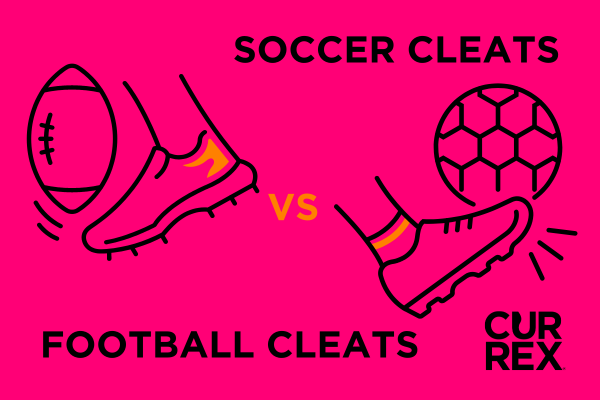
Purpose
Cleats give soccer and football players the traction, support, and stability they need to navigate the field and play efficiently. In soccer, players control the ball with their feet, so they need a shoe that won’t restrict contact or slow them down. Therefore, soccer cleats are lightweight with a flexible, yet snug feel that improves mobility and ball control.
Football has more physical interactions between players than soccer does with moves like tackling, blocking, running the ball, and punting. To support this kind of movement, football cleats need greater ankle support and a heavier feel, focusing on more stability, necessary traction, and protection.
Design
While there are different variations of soccer cleats depending on the type of field and style of play, all soccer cleats have a low-cut design. From turf shoes to indoor soccer cleats, this below-the-ankle height allows better control of the ball by not restricting ankle movement.

In football, the higher the cut of the cleat, the greater the support and stability. Available heights range from low to mid to high depending on preference and the position being played. Running backs might want a low cut, lightweight cleat when trying to outrun the other team while linemen need a high-top cleat with stability and support.
Midsoles
Soccer cleats do not have a midsole, giving them a more lightweight and natural feel. This is supposed to give players a lower center of gravity and improve control over the ball from heel to toe.
In football, the midsole is important for comfort, support, and added protection. All football cleats come with a midsole to help absorb shock and protect against injury.
Insoles for Soccer Cleats vs Football Cleats
To substitute the lack of a midsole and prevent foot pain in cleats, professional soccer players will often use soccer cleat insoles. Offering low profile support that moves with you, CURREX CLEATPRO insoles provide comfortable midfoot support with our Dynamic Arch Technology™, and they won't interfere with the natural feel of your soccer cleats.

Designed to accommodate narrow fitting cleats and spikes, CURREX CLEATPRO are the best insoles for football cleats and soccer shoes alike. They also feature a unique anti-slip SuperGrip technology for fast turns and precise movements. From touchdowns to finishing goals, CLEATPRO insoles for football cleats and soccer cleats complete the shoe and enhance your game.
Volume & Fit
The number one thing a soccer player needs out of their cleats is to control the ball. Soccer shoe manufacturers remove excess materials from the shoe, particularly in the upper and the midsole, to allow the foot to be closer to the soccer ball, making the soccer cleat an extension of the foot.
Due to the rough nature of the sport, football cleats must have more volume in the upper so the feet can fit safely and comfortably inside. Additional materials in the quarter panel of the shoe provide protection while padding around the collar and midsole foam offer extra support and comfort.

Adding a soccer shoe insole or an insole for football cleats gives players more protection without interfering with their game. Regardless of how much volume your cleats have, CURREX CLEATPRO won’t change the shoe’s intended fit. Our zero-drop design fits, wraps and locks the heel in without elevating it, giving you more stability without compromising fit.
Toe Stud Pattern
Toe studs on cleats give players better traction on surfaces like natural grass or turf. In soccer, these studs are round, conical, or bladed in shape and located along the heel and ball of the foot.
Unlike soccer cleats, football cleats have an additional toe spike near the big toe. This provides traction when blocking an opponent and helps players push off from a static position. Soccer cleats do not have a toe spike as it would interfere with ball control and increase risk of injury to fellow players.
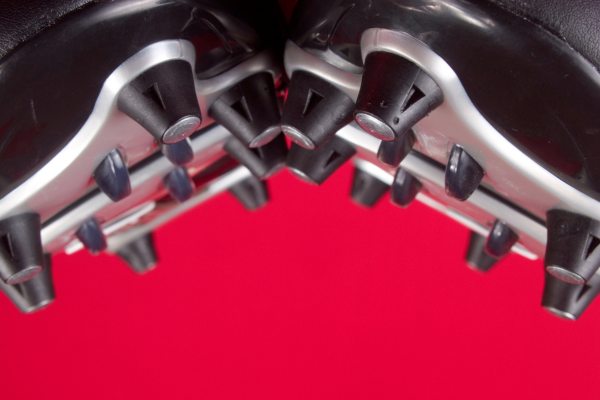
Weight
Cleats for soccer must be lightweight for better speed, stamina, and mobility. Lightweight cleats can help reduce fatigue, which is important in a sport where players are constantly jogging or running down the field.
Heavier cleats, like those in football, offer more support and stability for various positions. Certain players like receivers might prefer lighter weight shoes to heavy cleats so they can run faster than their counterparts. Meanwhile, linemen can hold their positions better in heavier football cleats.
Can I Use Soccer Cleats for Football?
Yes, you can use soccer cleats for football since there are no rules against it. The low-cut cleat can help running backs, wide receivers, and kickers improve their agility and speed on the field. However, football cleats are made to offer adequate protection and support, so not wearing them could increase your risk of injuries like ankle sprains.
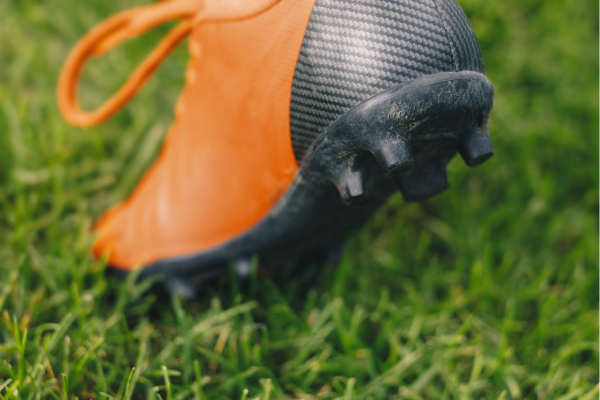
On the other hand, football cleats are not allowed in soccer as the presence of the toe spike puts players at risk of serious injury. The heavy weight and cumbersome height could also interfere with your mobility and performance.
If you plan to use your soccer cleats for football, adding CURREX CLEATPRO insoles to your cleats will give you the comfort, stability, and control you need to perform your best.
CURREX CLEATPRO Insoles for Cleats
Regardless of their differences, no cleat is complete without the adequate support, comfort, and fit of a dynamic insole like CURREX CLEATPRO. Designed to provide personalized comfort for all athletes on the field of play, CURREX CLEATPRO insoles have three profile options to choose from, keeping you active and your feet in control.


